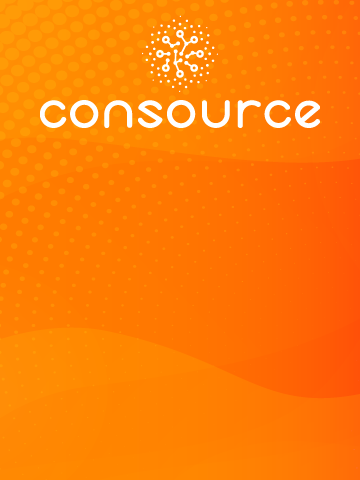À l'approche de 2025, la pression est forte pour actionner les bons leviers et atteindre vos objectifs financiers pour l'année. Vous avez fixé des objectifs ambitieux en matière d'EBITDA et de flux de trésorerie, mais à l'approche du deuxième trimestre, votre équipe dirigeante commence peut-être à ressentir la pression. Il s'agit d'un scénario courant : atteindre les objectifs avec un ensemble limité d'outils. S'il est essentiel de se concentrer sur l'innovation et l'élargissement de votre clientèle, vous pouvez également exploiter d'autres leviers pour vous remettre sur les rails. Voici comment vous pouvez prendre des mesures décisives, grâce à des stratégies qui non seulement répondent aux besoins immédiats, mais garantissent également le succès à long terme.
Gérer vos dépenses de conseil
Dans l'environnement commercial complexe d'aujourd'hui, l'acquisition de services de conseil est une entreprise stratégique qui ne se limite pas à la sélection du soumissionnaire le moins-disant. Le conseil est un secteur nuancé, souvent décrit comme une matrice de capacités, de secteurs et d'expertise. À l'horizon 2025, une gestion efficace de vos dépenses de conseil peut changer la donne et vous permettre d'atteindre vos objectifs financiers.
- Tirer parti de la gestion de la demande : La première étape de la gestion des dépenses de conseil consiste à contrôler la demande. En définissant clairement la portée de chaque projet et en l'alignant sur vos objectifs stratégiques, vous pouvez vous assurer que les services de conseil ne sont achetés qu'en cas d'absolue nécessité. Mise en œuvre d'un processus solide de gestion de la demande vous aide à éviter les dépenses inutiles et garantit que chaque mission de conseil apporte une réelle valeur ajoutée à votre organisation.
- Faire appel à des consultants spécialisés : Pour professionnaliser vos équipes et améliorer leur capacité à gérer efficacement les missions de conseil, envisagez de faire appel à des consultants spécialisés dans l'optimisation de l'utilisation des services de conseil. Ces experts peuvent fournir des conseils sur la manière de sélectionner les bons consultants, de structurer les missions pour un impact maximal et de veiller à ce que vos équipes internes soient pleinement équipées pour gérer ces relations.
- Utiliser les plateformes d'approvisionnement : Des plateformes comme Consource.io offrent des outils avancés pour la gestion des dépenses de conseil. Avec des fonctionnalités telles que l'analyse des dépenses, la gestion des fournisseurs et le suivi des contrats, ces plateformes vous permettent d'avoir une visibilité totale sur vos dépenses de conseil et de prendre des décisions éclairées sur l'affectation de vos ressources. En tirant parti des données, vous pouvez optimiser votre processus d'achat de services de conseil et maximiser le retour sur investissement.
A retenir sur le plan stratégique : En 2025, la gestion stratégique des dépenses de conseil par la gestion de la demande, l'expertise spécialisée en conseil et les plateformes d'approvisionnement est essentielle. Ces outils et partenariats vous permettent de concentrer vos investissements en conseil là où ils génèrent le plus de valeur, vous aidant ainsi à atteindre et à dépasser vos objectifs financiers.
Acheter mieux sur les coûts directs
L'optimisation des coûts d'approvisionnement a toujours été un levier essentiel pour influer sur les pertes et profits et les flux de trésorerie, mais les stratégies pour y parvenir ont considérablement évolué à l'approche de 2025. Les perturbations de la chaîne d'approvisionnement, l'instabilité géopolitique et l'évolution de la dynamique du marché font qu'il est plus important que jamais d'adopter une approche proactive et fondée sur les données en matière d'approvisionnement.
- Tirer parti de l'analyse des données : L'analyse avancée des données n'est plus un luxe mais une nécessité. En évaluant les tendances de l'offre et de la demande à un niveau granulaire, vous pouvez identifier les opportunités de renégocier les contrats, d'optimiser les dépenses et de découvrir des gains rapides. La décomposition des dépenses par UGS et l'analyse des conditions du marché peuvent révéler des domaines dans lesquels vous pouvez réaliser des économies significatives.
- Renégocier les contrats : En 2025, le marché est plus volatil que jamais, et cette volatilité offre des opportunités. Renégocier les contrats en fonction des conditions de l'offre et de la demande en temps réel vous permet d'éviter d'être enfermé dans des conditions défavorables. Par exemple, dans les secteurs où les coûts des matières premières fluctuent, des modèles de tarification dynamique peuvent être mis en œuvre pour garantir que vous payez toujours un prix équitable.
- Diversifier les sources d'approvisionnement : La résilience de la chaîne d'approvisionnement est essentielle en 2025. Faire appel à des fournisseurs de second rang permet non seulement d'atténuer les risques, mais aussi de renforcer votre position de négociation. Cela est particulièrement important dans des secteurs comme l'électronique, où les perturbations de la chaîne d'approvisionnement sont fréquentes.
A retenir sur le plan stratégique : Des stratégies d'approvisionnement fondées sur des données, associées à une gestion agile des contrats, vous aideront à naviguer dans les complexités de 2025. En restant proactif et en exploitant des outils avancés, vous pouvez réaliser des économies substantielles sur les coûts directs.
Effet de levier sur la tarification
La tarification reste l'un des leviers les plus puissants et les plus immédiats pour stimuler la rentabilité. Toutefois, en 2025, l'approche de la tarification devra être plus sophistiquée et faire appel à la technologie et à la connaissance des clients pour maximiser l'impact.
- Produits différenciés : Si vous proposez des produits différenciés, le moment est venu de réévaluer votre stratégie de prix. Les analyses avancées peuvent vous aider à comprendre la volonté de payer des clients, ce qui vous permet de capturer plus de valeur sans pousser les clients vers la concurrence. Les modèles de tarification dynamique, alimentés par l'IA, peuvent ajuster les prix en temps réel en fonction des fluctuations de la demande et des conditions du marché.
- Produits de base : Pour les produits de base, la tarification doit être souple et s'adapter aux conditions du marché. La mise en œuvre de stratégies prix-volume intelligentes peut vous aider à maximiser vos profits tout en optimisant l'utilisation de vos actifs. L'analyse prédictive permet de prévoir les évolutions du marché et d'ajuster les prix de manière proactive plutôt que réactive.
- Services : Alors que l'économie des services continue de se développer, il est important de s'assurer que vous fixez le prix des services en fonction de la valeur qu'ils apportent. Qu'il s'agisse d'une gestion avancée des stocks, d'une assistance clientèle 24/7 ou d'un réapprovisionnement automatique basé sur l'IoT, réfléchissez à la manière dont vous pouvez différencier les niveaux de service et les monétiser efficacement.
A retenir sur le plan stratégique : Les stratégies de tarification en 2025 devraient être dynamiques et axées sur les données, ce qui vous permettra de capturer une valeur maximale tout en restant compétitif. L'analyse avancée et l'IA sont des outils clés pour des stratégies de tarification efficaces.
Mieux acheter les coûts indirects
Si les coûts directs occupent souvent le devant de la scène, l'optimisation des coûts indirects est tout aussi cruciale. Alors que les entreprises continuent de s'adapter à de nouvelles méthodes de travail, en particulier dans un environnement hybride ou à distance, les coûts indirects font l'objet d'une attention renouvelée.
- Centraliser les achats : En 2025, de nombreuses entreprises ont réussi à centraliser leurs fonctions d'achat, en particulier pour les coûts indirects tels que l'assurance, les voyages et le conseil. Cette approche centralisée permet un meilleur pouvoir de négociation et une gestion plus stratégique des dépenses.
- Tirer parti de la technologie : Les outils de gestion des dépenses pilotés par l'IA se généralisent, offrant un suivi et une optimisation en temps réel des dépenses indirectes. Ces outils permettent d'identifier les gaspillages, de faire respecter les politiques et de découvrir des opportunités d'économies qui pourraient autrement passer inaperçues.
- Optimiser les outils numériques : Le travail à distance étant devenu la norme, il est essentiel de s'assurer que l'on tire pleinement parti des outils numériques existants pour réduire les frais de déplacement et de bureau. Les entreprises qui ont mis en œuvre avec succès des politiques globales de travail à distance ont constaté une réduction significative des frais de déplacement et une augmentation de la productivité.
A retenir sur le plan stratégique : En centralisant les achats et en tirant parti de la technologie, vous pouvez réaliser d'importantes économies sur les coûts indirects et libérer des ressources pour investir dans la croissance et l'innovation.
Jouer avec de l'argent
La gestion des flux de trésorerie est plus que jamais essentielle en 2025, l'incertitude économique mondiale créant des défis pour les entreprises de tous les secteurs. Des stratégies efficaces de gestion de la trésorerie sont essentielles pour maintenir les liquidités et s'assurer que votre entreprise peut faire face à toutes les tempêtes qui surviennent.
- Capitaliser sur les solutions Fintech : Les innovations Fintech continuent de révolutionner la gestion de la trésorerie. Les plateformes d'escompte dynamique et de financement de la chaîne d'approvisionnement vous permettent de négocier des conditions de paiement favorables avec les fournisseurs, ce qui améliore la trésorerie tout en maintenant de bonnes relations avec les principaux vendeurs.
- Retarder les investissements non essentiels : Donner la priorité aux dépenses d'investissement reste une stratégie clé. Retarder les investissements non essentiels vous permet de conserver des réserves de trésorerie pour des initiatives stratégiques ou des besoins inattendus. Concentrez-vous sur les investissements dont le retour sur investissement immédiat est le plus élevé afin de vous assurer que vous tirez le meilleur parti de votre capital.
- Améliorer l'encaissement : Les outils avancés de gestion du crédit, alimentés par l'IA, peuvent rationaliser le processus de recouvrement, réduire le DSO (Days Sales Outstanding) et améliorer la prévisibilité des flux de trésorerie. En 2025, les entreprises qui gèrent efficacement leurs créances disposent d'un avantage significatif.
A retenir sur le plan stratégique : Tirer parti des solutions fintech et maintenir des pratiques disciplinées de gestion de la trésorerie sera crucial pour optimiser les flux de trésorerie en 2025. Ce faisant, vous vous assurerez que votre entreprise dispose des liquidités dont elle a besoin pour prospérer.
Optimiser les actifs
Les stratégies d'optimisation des actifs en 2025 sont de plus en plus axées sur l'innovation numérique et les partenariats stratégiques. Les entreprises qui cherchent à maximiser la valeur de leurs actifs se tournent vers les nouvelles technologies et les modèles de collaboration.
- Jumeaux numériques : La technologie des jumeaux numériques est en train de changer la donne dans la gestion des actifs. En créant des répliques virtuelles des actifs physiques, les entreprises peuvent surveiller les performances en temps réel, prévoir les besoins de maintenance et optimiser l'utilisation. Cette technologie est particulièrement précieuse dans les secteurs à forte intensité de capital comme la fabrication et l'énergie.
- Partenariats stratégiques : Les partenariats stratégiques continuent d'offrir d'importantes possibilités d'optimisation des actifs. En vous associant à des entreprises dont les capacités sont complémentaires, vous pouvez maximiser l'utilisation des actifs et réduire les coûts. Par exemple, une entreprise de défense peut s'associer à une entreprise technologique pour utiliser les capacités de production inutilisées pendant les périodes creuses.
- Modèles d'économie partagée : L'économie du partage fait également son entrée dans la gestion des actifs. Les entreprises explorent de plus en plus des modèles où les actifs sous-utilisés sont loués à d'autres entreprises, ce qui génère des flux de revenus supplémentaires et améliore le retour sur investissement.
A retenir sur le plan stratégique : L'adoption de jumeaux numériques, de partenariats stratégiques et de modèles d'économie partagée vous aidera à optimiser les actifs en 2025, en favorisant l'efficacité et la rentabilité.
Remise sur les rails : Activer les bons leviers
Alors que nous nous préparons pour 2025, les stratégies décrites ici seront essentielles pour vous remettre sur les rails et atteindre vos objectifs financiers. Que vous vous remettiez d'un lent début d'année ou que vous vous constituiez une réserve pour faire face aux incertitudes futures, c'est maintenant qu'il faut agir. N'attendez pas le troisième trimestre pour procéder aux ajustements nécessaires - consacrez des ressources internes et envisagez de faire appel à des experts externes pour vous aider à relever ces défis complexes.
Au Consource.ioNous sommes spécialisés dans la fourniture d'outils et de plateformes nécessaires à l'optimisation de vos dépenses de conseil et à l'obtention de meilleurs résultats. Notre plateforme offre une solution complète pour gérer vos achats de conseil, de l'analyse des dépenses à la gestion des contrats, vous assurant de prendre des décisions éclairées qui maximisent la valeur.
Alors que vous planifiez l'année à venir, l'utilisation des bons leviers et outils vous permettra non seulement d'atteindre, mais aussi de dépasser vos objectifs financiers pour 2025. Faites le bon choix, devenez partenaire de Consource.io et mettez votre entreprise sur la voie du succès.
Questions Fréquemment Posées
Comment les entreprises peuvent-elles gérer efficacement leurs dépenses de conseil en 2025 ?
Les entreprises peuvent gérer leurs dépenses de conseil en mettant en œuvre des processus de gestion de la demande solides, en engageant des consultants spécialisés et en utilisant des plateformes d'approvisionnement telles que Consource.io. Ces stratégies permettent de contrôler les coûts, d'optimiser la sélection des consultants et de s'assurer que les missions de conseil offrent une valeur maximale.
Quels sont les moyens d'optimiser les coûts d'approvisionnement pour les dépenses directes ?
L'optimisation des coûts d'approvisionnement pour les dépenses directes implique de tirer parti de l'analyse des données pour évaluer les tendances de l'offre et de la demande, de renégocier les contrats en fonction des conditions du marché en temps réel et de diversifier les sources d'approvisionnement pour améliorer la résilience de la chaîne d'approvisionnement. Ces stratégies permettent aux entreprises d'identifier les possibilités d'économies et de négocier des conditions plus favorables avec les fournisseurs.
Comment les entreprises peuvent-elles tirer parti des stratégies de tarification pour accroître leur rentabilité en 2025 ?
Pour accroître leur rentabilité grâce à des stratégies de tarification, les entreprises devraient adopter des modèles de tarification dynamiques, utiliser des outils d'analyse avancés pour comprendre la volonté de payer des clients et mettre en œuvre des stratégies intelligentes de prix et de volume pour les produits de base. Pour les services, la différenciation basée sur la valeur fournie et l'ajustement des prix en conséquence peuvent également contribuer à maximiser les revenus.
Pourquoi la gestion des coûts indirects est-elle importante pour les entreprises ?
La gestion des coûts indirects est importante car ces dépenses, telles que les assurances, les voyages et les fournitures de bureau, peuvent s'accumuler rapidement et avoir un impact sur le résultat net d'une entreprise. La centralisation des achats, l'exploitation d'outils de gestion des dépenses pilotés par l'IA et l'optimisation des outils numériques pour le travail à distance peuvent aider à identifier les possibilités d'économies et à réduire les dépenses inutiles.
Quelles stratégies peuvent améliorer la gestion des flux de trésorerie en 2025 ?
L'amélioration de la gestion des flux de trésorerie passe par l'utilisation de solutions fintech telles que l'escompte dynamique et les plateformes de financement de la chaîne d'approvisionnement, la hiérarchisation des dépenses d'investissement sur la base d'un retour sur investissement immédiat et l'amélioration des processus de recouvrement des liquidités à l'aide d'outils avancés de gestion du crédit. Ces stratégies permettent de maintenir les liquidités et d'assurer la stabilité financière dans un contexte d'incertitude économique.
Comment les entreprises peuvent-elles optimiser leurs actifs pour obtenir de meilleures performances financières ?
Les entreprises peuvent optimiser leurs actifs en adoptant des jumeaux numériques pour surveiller les performances et prévoir les besoins de maintenance, en formant des partenariats stratégiques pour maximiser l'utilisation des actifs et en explorant des modèles d'économie partagée pour générer des revenus supplémentaires. Ces approches permettent d'améliorer l'efficacité des actifs, de réduire les coûts et de stimuler la rentabilité.








0 commentaires